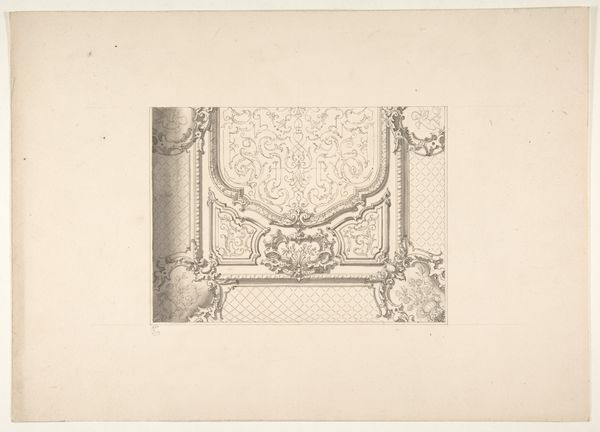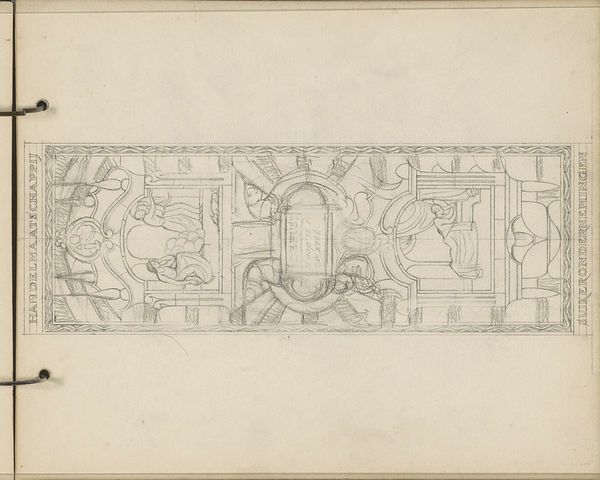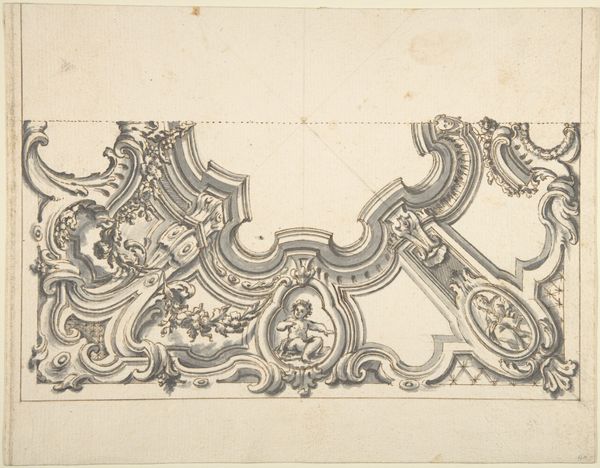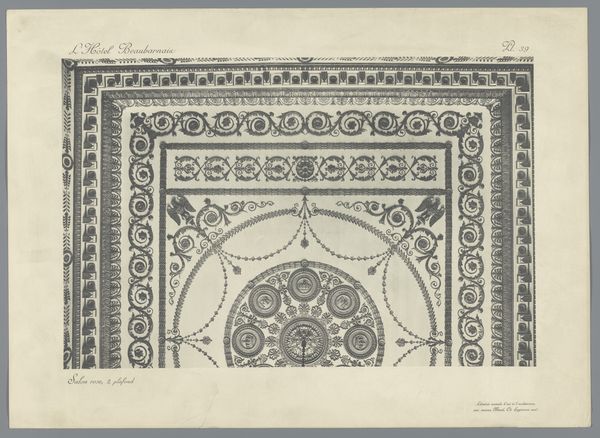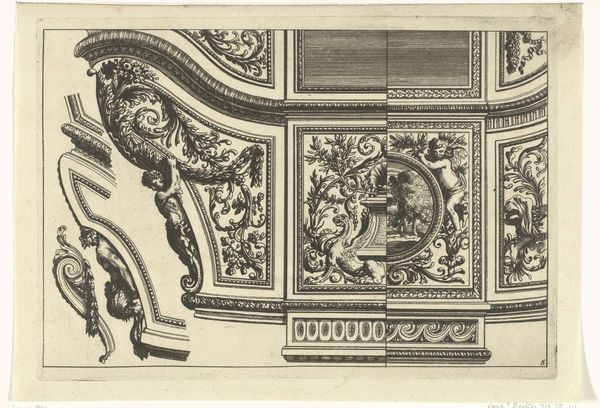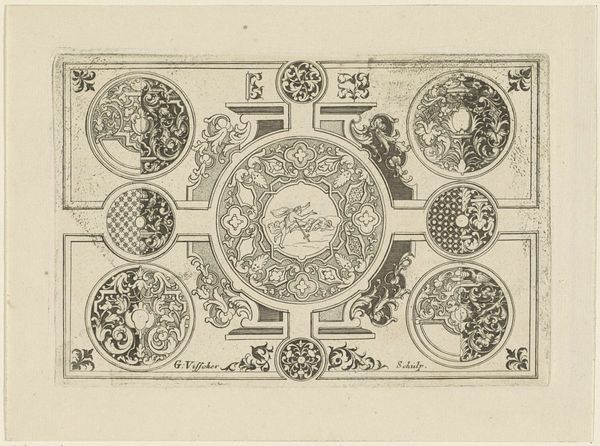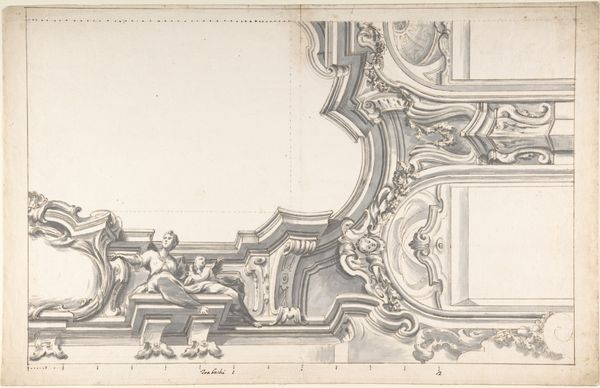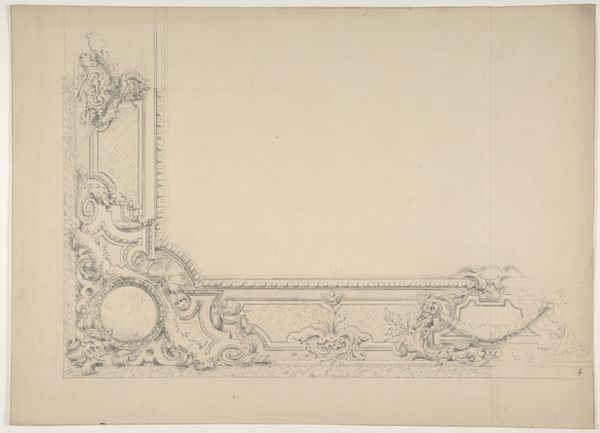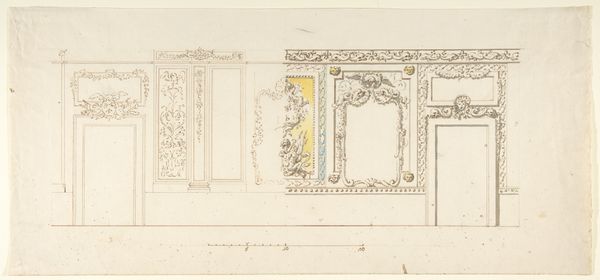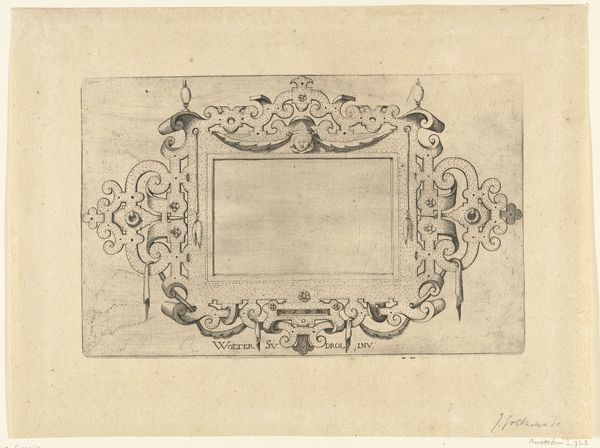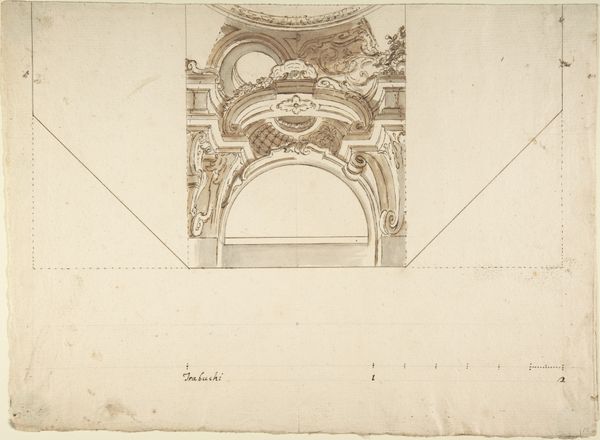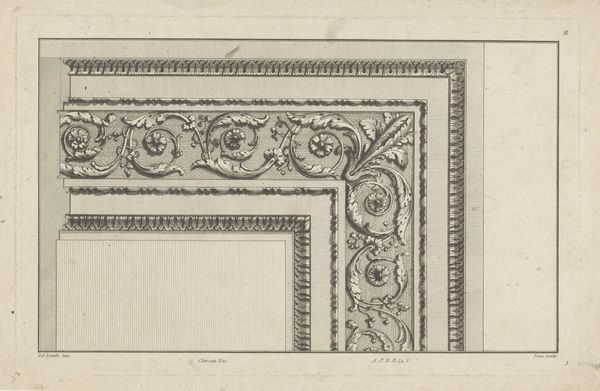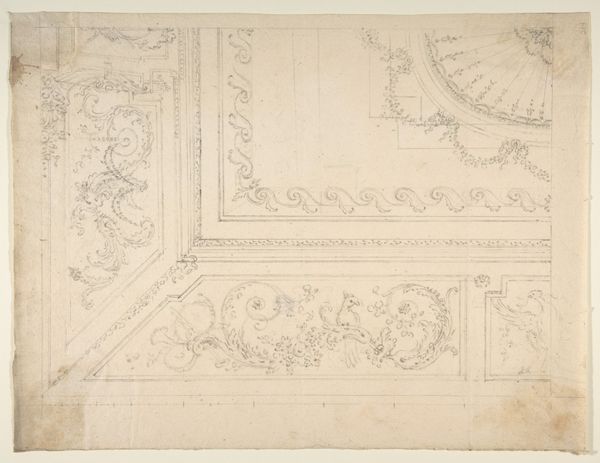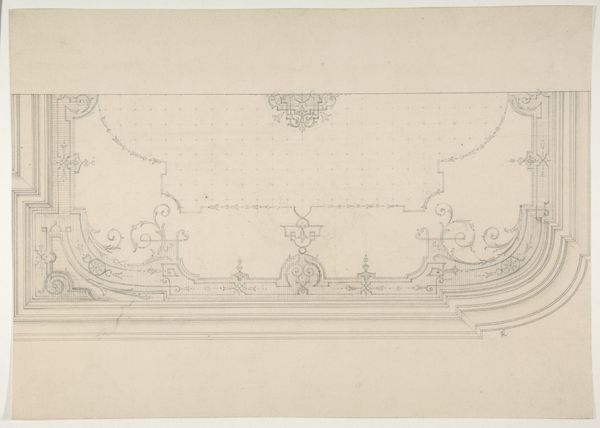
Design for the painted decoration of a ceiling with the monogram: M 1830 - 1897
0:00
0:00
drawing, lithograph, print
#
drawing
#
neoclassicism
#
lithograph
# print
#
etching
Dimensions: sheet: 10 9/16 x 14 7/8 in. (26.9 x 37.8 cm)
Copyright: Public Domain
Editor: Here we have Jules-Edmond-Charles Lachaise's "Design for the Painted Decoration of a Ceiling with the monogram: M," created sometime between 1830 and 1897. It’s a lithograph, and what strikes me is the intense detail – you can almost feel the texture of the ceiling moldings. What do you make of this design, thinking about it beyond just aesthetics? Curator: Looking at this lithograph, I’m drawn to consider the means of its production, and the labor inherent in producing designs such as these. It serves as a crucial document to understand the socioeconomic conditions and relations between artists and patrons. This wasn’t ‘high art’ meant for a gallery, but a template intended for mass reproduction in the homes of the wealthy. How would this division of labor in architectural projects affect the perceived 'authenticity' of a handcrafted object? Editor: That's a very interesting perspective. I hadn't thought about how something that looks so bespoke was intended for broader application. The monogram also implies a specific client. Was this a common practice, and what impact might such customization have had? Curator: The incorporation of a monogram is telling. The “M” woven into the design makes the production of identity so apparent. Consider who was employed and under what conditions to bring this personal embellishment to life. Furthermore, what level of skill, knowledge, and material went into constructing these intimate living spaces of the elite? These choices have implications about social hierarchies, not just artistic talent. Editor: It is fascinating to view the art in terms of those labor processes! Viewing architectural renderings as indicators of production illuminates a layer of socio-economics of interior design that may otherwise go unseen. Curator: Precisely. It’s about dismantling the mystique around artistic creation and viewing these works as tangible products of complex relationships. Perhaps it highlights the under-acknowledged role of skilled artisans!
Comments
No comments
Be the first to comment and join the conversation on the ultimate creative platform.
